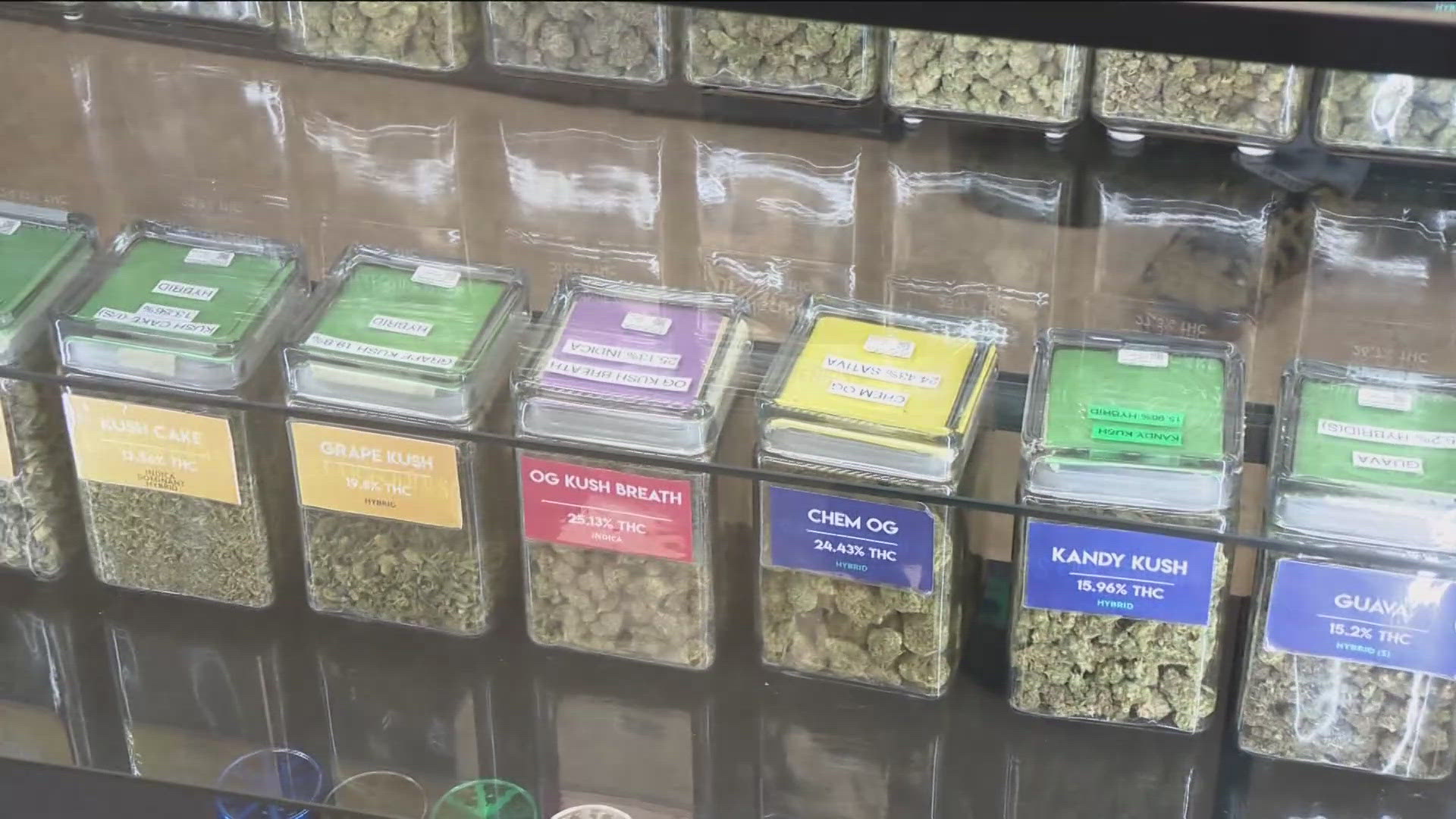MINNEAPOLIS — Minneapolis City Council has new regulations for cannabis businesses, affecting where dispensaries can be located from one another and from places like schools.
In Minnesota's growing cannabis industry, retailers like Sweet Leaves are on high alert for such announcements.
"Our head council helps keep up on the ever changing laws," said Adam Hoffman, one of four friends who decided to bring a "premiere cannabis dispensary" to Minneapolis' North Loop.
Open since May, Sweet Leaves is one of the social equity applicants waiting to find out if it has secured a lottery spot, Hoffman says, which would allow them to offer weed in flower form in addition to the organic, vegan and gluten-free THC and CBD edibles and drinks they sell now.
That state Office of Cannabis Management announcement could come by the end of this year.
In the meantime, Minneapolis is setting city rules, approving cannabis business zoning regulations Thursday on a 12-1 vote. The passage included deciding against a measure that would have required a set spatial distance between each dispensary.
"Just taking away the spacing requirements is a real blunt, no pun intended, it's a very blunt use of our zoning policy," Ward 13 council member Linea Palmisano said during a pre-vote discussion. "We have a great responsibility here to wade into this cautiously because we will never be able to go backwards."
"We can always go back and revisit this ordinance," said Ward 6 council member Jamal Osman, who co-authored the ordinance with council member Aurin Chowdhury, Ward 12.
The authors explained the lack of buffer is to encourage healthy competition and avoid existing out-of-state cannabis corporations from taking over an area where startups like Sweet Leaves may also want to sell.
"Minneapolis is a dense place," Hoffman said. "More people, more businesses, it's better for everyone. I also think competition is healthy … Putting small businesses first is exactly what the city should be doing."
While a buffer isn't required between dispensaries, distance will be required between dispensaries and schools. Council considered making it 500 feet but approved lowering it to 300 feet, which is the same distance liquor stores are required to be located away from schools.
"Especially thinking about the legacy of criminalizing cannabis and how legalization is a part of remedying that harmful legacy specifically to people who are incarcerated for low-level drug crimes and the way that cannabis has been perceived in our country, having a higher restriction on spacing from schools from liquor, liquor stores, felt a way of saying one is more moral than the other," Chowdhury said.
Excluding some recreational dispensaries located on Indigenous reservations, most of the state will not see one of them open until summer 2025.
Minneapolis is expected to set more rules before then, like whether to allow weed smoking on outdoor patio spaces.
"I don't think cannabis business should be disrupting, you know, city and pedestrians in any way," Hoffman said.
According to a city press release, additional highlights include:
- Allowing cannabis retailers in most commercial and production zoning districts.
- Requiring a three-acre area of contiguous commercial or production zoning in order to locate a cannabis retailer.
- Requiring commercial cultivation of cannabis in the Production and Processing zoning districts, similar to existing urban agriculture uses
- Allowing limited production of cannabis products in most commercial districts
Minnesota state law requires the city to allow a minimum of 34 licenses for dispensaries, based on a requirement of one cannabis retailer for every 12,500 people.

